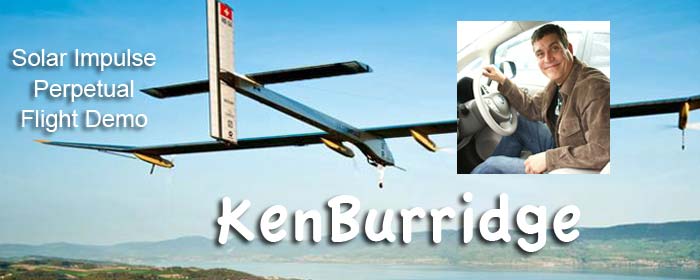3D Printing Plays Big Part in Green Revolution
Three-dimensional printing, will change and disrupt vast portions of the manufacturing industry. 3D printers have been falling in price and increasing capabilities for the last ten years. 3D printers are now just getting inexpensive enough for widespread private ownership, to the point of 3D printing pens being available for kids to start being creative with. (Source: 3dprintingpenpicks.com)
The most popular 3D printing method Fused Deposition Modeling (FDM) works by layering durable plastics and metals typically designed via 3D Computer Aided Design (CAD) software. The layers are composed of powder, liquid and sheet materials. The other types of 3D printing include Stereolithography (STL) and Powder Deposition Printing (PDP). These printing machines tend to be operated by a single board computer that handles the processes, similar to the PC 104 SBC, but some of the more elaborate ones may have more hardware aboard.
Think of 3D printing today as the first steps toward the replicator in the world of Star Trek.
![]() The reason this green tech–3D printing is so green is that it reduces the distribution cost for transportation by approximately 97% as you can make/create many components onsite and thus eliminated the need to be shipped from China etc. 3D printing also creates local jobs, increases recycling, reduces waste, and speeds delivery time to market for many products.
The reason this green tech–3D printing is so green is that it reduces the distribution cost for transportation by approximately 97% as you can make/create many components onsite and thus eliminated the need to be shipped from China etc. 3D printing also creates local jobs, increases recycling, reduces waste, and speeds delivery time to market for many products.
The popular question most people seem to ask “What can be made right now with a 3D printer?” Answer: Music instruments (violins, guitars, and flutes, etc.), food, coffee cups, jaw bones & teeth for transplants and/or replacement, high heel shoes, bikinis, wall clocks, hanging lights, fabric looms, iPhone cases, camera lens, all sorts of art and models. Modern 3D printers can print/produce with a variety of plastic chemistries, carbon fiber, nylon, powdered metal and powdered food products. Yes you read that last part properly.
- 3D pizza printer
- 3d food slury cartridges for making food for NASA misions to Mars
Systems and Materials Research Corporation (SMRC) is using powders to produce a edible slurry for 3D printing of food on a contract from NASA. Their pizza printer can “print” dough, sauce and cheese onto a platform with a heating element underneath.
NASA has 3D printed a rocket engine that can produce 20,000 pounds of thrust.
Local Motors in Chandler Arizona 3D printed a drivable electric car called the Strati printed in a micro-factory, which is really just a 3D printer, and a designated assembly area. Having such a small sized factory makes it easy to to set up shop almost anywhere-even on a lunar base. Tread Hunter posted about this as they are very interested, apparently, Local Motors Strati EVuses less than 50 parts total and can be printed in 44 hours and should be cleared to be driven on US public roads sometime in 2015. Everything except for the: windshield, seats, tires, wiring, suspension, electric motor, and batteries are produced by 3D printer. The Strati EV is built in a micro-factory, which is really just a 3D printer, and a designated assembly area. Local Motors is taking advanced orders now.
Here are just a few of the big players in the 3D printing world at the moment:
Baidu (Nasdaq: BIDU) – In business since 2006
Catamaran (Nasdaq: CTRX) – In 3D print business since 2009
IPG Photonics (Nasdaq: IPGP) – In 3D print business since 2008
MercadoLibre (Nasdaq: MELI) – In 3D print business since 2009
Priceline.com (Nasdaq: PCLN) – In 3D print business since 2004
Universal Display (Nasdaq: OLED) – In 3D print business since 2005
As cool as 3D printers are, they are not the best for producing many thousands of copies of something because at some point it would be more efficient to use 3D printing to produce molds for creating components, using more robust materials instead of the ware and tear on the 3D printer. Also, like contemporary inkjet printers that use proprietary cartridges, most companies that sell 3D printers lock their customers into being able to only use their products. Moreover, the industries like aerospace machining can benefit a great deal through 3D printing since it can help in designing prototypes of machinery for testing product engineering. It can reduce manufacturing expenses and can make an inspection process easier.
What’s coming next in the green 3D printing world? Personally, I feel that being able to create homemade solar panels, wind turbine components, and battery cells will allow people to use significantly less electricity from the grid. Think of the near future where driving an electric vehicle (EV) instead of a polluting fossil fuel vehicle for the vast majority of transportation needs would be the norm. If transport were electric-powered, then the average citizen living in the suburbs, especially in a single-family home, will be able to refuel their car with the energy they mostly capture from the sun or wind.
Green-Eco-EV News Reporting by Ken Green Burridge
EV of the Year Judge, independent green journalist, photographer, author and sustainability activist that has published over 1000 articles. Mr Burridge’s travels have taken him to over 30 countries and 300+ major cities. He is originally from the USA, but has been residing in Australia for the last seven years. Connect to Ken Burridge on: Twitter, facebook, Google+, Linked in or website
























